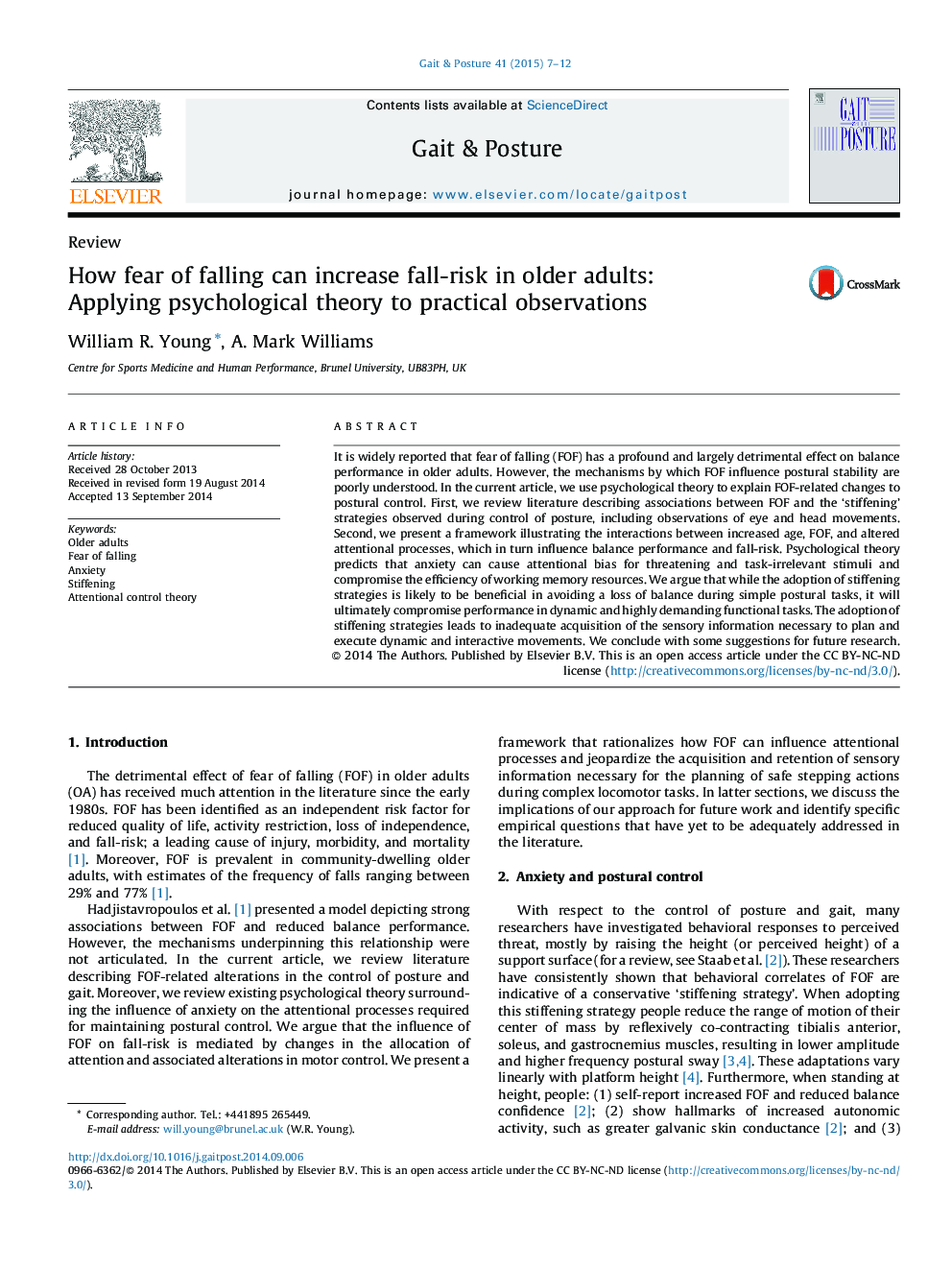| Article ID | Journal | Published Year | Pages | File Type |
|---|---|---|---|---|
| 6205619 | Gait & Posture | 2015 | 6 Pages |
â¢Anxiety is associated with attentional bias for threatening stimuli.â¢Anxiety-related attentional bias for threat helps to explain 'stiffening' behaviors.â¢'Stiffening' behaviors will only help to prevent falls during simple postural tasks.â¢Anxiety will compromise attentional resources required for complex locomotor tasks.â¢Stiffening behavior could be driven by an internal focus of attention/reinvestment.
It is widely reported that fear of falling (FOF) has a profound and largely detrimental effect on balance performance in older adults. However, the mechanisms by which FOF influence postural stability are poorly understood. In the current article, we use psychological theory to explain FOF-related changes to postural control. First, we review literature describing associations between FOF and the 'stiffening' strategies observed during control of posture, including observations of eye and head movements. Second, we present a framework illustrating the interactions between increased age, FOF, and altered attentional processes, which in turn influence balance performance and fall-risk. Psychological theory predicts that anxiety can cause attentional bias for threatening and task-irrelevant stimuli and compromise the efficiency of working memory resources. We argue that while the adoption of stiffening strategies is likely to be beneficial in avoiding a loss of balance during simple postural tasks, it will ultimately compromise performance in dynamic and highly demanding functional tasks. The adoption of stiffening strategies leads to inadequate acquisition of the sensory information necessary to plan and execute dynamic and interactive movements. We conclude with some suggestions for future research.
